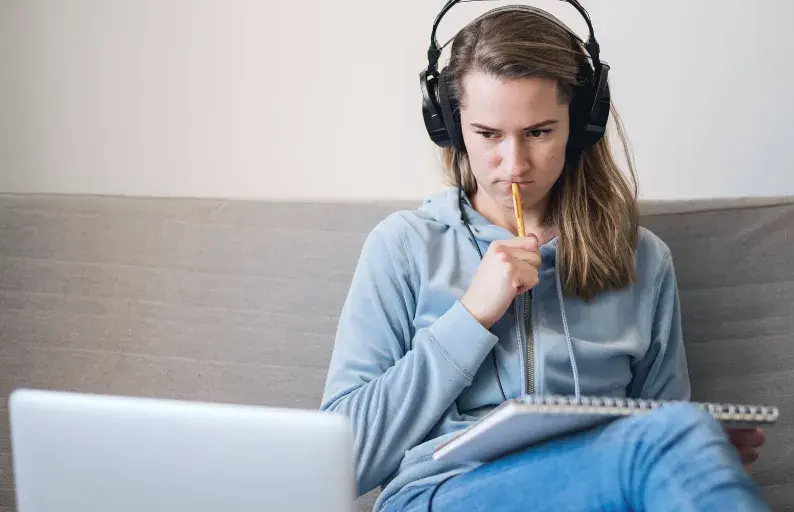Elearning teamwork is a methodology based on teamwork. Learning by doing’ is much more effective than exclusively memorising theories and concepts without knowing how to apply them.
When students put knowledge into practice and build it together (researching, observing and talking), there is constant feedback that helps them to understand in a deeper way.
Today we are truly aware that the way students learn today cannot be the same as it was 40 years ago.
First, because it has been demonstrated by researchers such as Robert & David Johnson, known for their contributions in the area of teamwork learning, that there are other, more successful ways to achieve meaningful learning.
And, secondly, because the virtual environment requires more effort and motivation for students to overcome isolation and add enthusiasm to their studies.
Let’s see, then, what elearning teamwork is eand how to apply it in online classes.
What is elearning teamwork?

In the words of Francisco Zariquiey, an expert in cooperative learning and diversity management, “the best way to educate those who are different is to get them to learn together”.
And that is a reality like a cathedral. We learn from others and with others. Not long ago, we addressed this issue in a reading on project-based learning, which, after all, is nothing more than a elearning teamwork strategy for students to learn in groups, in an active and autonomous way.
To return to the subject, collaborative learning is based on students working in teams to improve their educational experience. Thus, it seeks to foster in them the necessary skills for such collaboration, such as the ability to communicate and adapt or to improvise.
Specifically, this dynamic emphasises interaction through activities in which it is necessary for students to collaborate with each other in order to reach a common goal.
To this end, small groups are created in which each student contributes and enriches his or her knowledge, while at the same time contributing to the learning of others.
Collaborative learning is the perfect complement to individual activities aimed at making students succeed solely and exclusively on their own merits.
Is there a difference between cooperative and elearning teamwork?
Both are very beneficial pedagogical methods.
The truth is that the advantages of cooperative and collaborative learning are very similar. And although both approaches encourage social interaction, collaboration, participation, reflection and diversity, there are significant differences.
On the one hand, teamwork learning emphasises the construction of a collective goal through interaction and dialogue. It involves learners working in an environment of equality, with mutual responsibility, until fresh solutions are found together.
In this, learners are more independent, feel free to think outside the box and explore different approaches and are fully responsible for their learning and assessment.
The role of the e-learning teacher is to be a guide and support. So he/she will propose the topic and will be present, to a greater or lesser extent, offering guidance and feedback.
On the other hand, in cooperative learning, which is very much focused on teamwork, the role and individual responsibility of the students in the group varies.
That is, the learner has an individual task or goal, but the success of each learner depends on the success of the group as a whole.
Here the teacher’s mission is to ensure that everyone works equally and that there are not some who take on more weight, to guide them, to tutor the process and to evaluate them with a final project, a presentation or some other possibility.
Conflict can arise in both types of learning. Whether due to particular differences, not sharing the same learning styles, poorly defined roles or responsibilities.
Whatever the case, the drawbacks of cooperative and teamwork learning can be foreseen and, to a large extent, overcome.
Which students benefit most from teamwork learning?

In line with what we were saying, learning in a team is good for everyone.
However, it is true that there are a number of personality traits and skills that can make the work more difficult for some.
For example, there are many students who, for whatever reasons, prefer to work alone. Or there are cases where they are more open to participation, but lack communication or conflict management skills.
And then there are those who are just there for the sake of it and do not take the activity seriously. These are the ones we need to focus on to help them acquire responsibility, develop skills or find the will to work on more ambitious projects.
Teamwork as a learning strategy in e-learning

Why is elearning teamwork important in online training?
One of the possible pitfalls of e-learning is that many students think that, even if they have a good relationship with the teacher, it is not essential to have a good relationship with the other students, which is why they relegate it to the background.
But interactions are part of learning.
As we have already mentioned, thanks to them, each student can build knowledge and acquire new points of view and feedback with which to better understand what they are learning.
Well, elearning teamwork promotes such a relationship and its advantages are more significant when it takes place at a distance through an elearning platform.
Precisely, in face-to-face learning it is usually the case that students relate to like-minded people.
However, in the virtual environment there is no such discrimination and a more diversified dynamic is created where each member is exposed to ways of analysing and solving problems with people of different profiles and contexts. This can enrich their learning and broaden their perspectives.
However, for the activity to flow, they have to be connected. Therefore, elearning teamwork will require a certain amount of planning, such as establishing work times that coincide with the availability of the bulk of the group, or the distribution of tasks in a functional way.
In this aspect, it is not only crucial to focus on the approach to the platform and tasks, but also on other group-related issues, such as the number of members.
How to prepare the virtual learner for elearning teamwork?

Broadly speaking, the characteristics of collaborative learning include interaction, cooperation and knowledge building in teams.
But to bring it to fruition, it is vital that students are aware of their role and responsibility.
To get them fully engaged, you would need to evidence:
- The value of teamwork learning
Around the achievement of shared goals, you have to make them understand that the strengths of each participant can make up for the weaknesses of others.
Moreover, the result of this collaborative synergy will allow them to reach the collective goal faster and more effectively.
- The importance of cooperation in the classroom
In relation to the climate and dynamics of the activity, motivate them to collaborate in a healthy and productive way. That is, invite them to share outstanding information, findings, opinions… Because the more knowledge they acquire together, the more they will add to the common result.
Likewise, instil in them to work with a resolute attitude in the event of conflict, valuing the possible differences between them.
- The need for individual commitment
On the other hand, explain to them that, although the work is divided, they need to fulfil the individual objectives in order to, together, achieve the final objective.
- The desirability of joint communication and decision making
In terms of relations between the parties, you will need to do a number of things.
First of all, nurture a communicative attitude and encourage them to share ideas and opinions. And, of course, give them the means to meet, discuss, debate and make decisions.
Below, you will see the channels provided by the e-learning platform for this purpose.
Elearning teamwork techniques

The formation of groups
To begin with, form small groups.
At the same time, to avoid frustration and prevent possible conflicts between members, it is necessary to leave some freedom so that students can group themselves in the way that best suits them, establishing a hierarchy, roles and duties in each case.
Likewise, the purpose of the activity and the basic patterns to be followed in order to achieve them should be made clear.
The activity itself
It is crucial that students can perceive the scope of the task.
If they do not see the benefit of acquiring the knowledge in the future, they will not put enough effort into it.
Similarly, if the task given is very simple, it is very likely that only part of the group will take on the duties and communication will not be greatly enhanced.
Consequently, elearning teamwork tasks should create situations that force the group to work as a team.
You can start by brainstorming ideas or watching a video and then lead the discussion.
Remember to give guidance and support at all times and make sure that they are indeed concentrating, understanding and learning as they should, so that nothing affects the effectiveness of the teamwork.
In How to concentrate to study, guide your students!, you have a small guide to help them with some very simple techniques.
Group evaluation and individual contribution
Your presence is critical to clarify doubts and give virtual feedback on how the work is being approached.
In this sense, it is essential to recognise and celebrate the group’s achievements in order to encourage learners’ motivation and commitment.
To enable them to evaluate their work, provide tools for self-assessment. And, when making your group assessment, taking into account individual input and understanding of the subject, get them to see that achievements and failures are everyone’s responsibility.
How to promote collaboration and teamwork on an e-learning platform?

Since real learning takes place in ‘doing’, one of the most powerful options for them to ‘learn by doing’ will be discussion.
In this regard, e-learning platforms not only have tools for this, but also for interacting around the clock via chat or videoconferencing. The latter allow learners to communicate and work collaboratively in real time.
Moreover, many of the videoconferencing systems of e-learning platforms include online whiteboards where it is possible to make interesting concept maps, diagrams or summaries for the group project.
You could also apply additional learning strategies, such as flipped classroom, project-based or peer-based models, and suggest group dynamics or games.
In short, give students a variety of options to explore and participate. Make them aware of the tools available to them and encourage their use so that they can maintain the constant and fluid communication that elearning teamwork requires.
